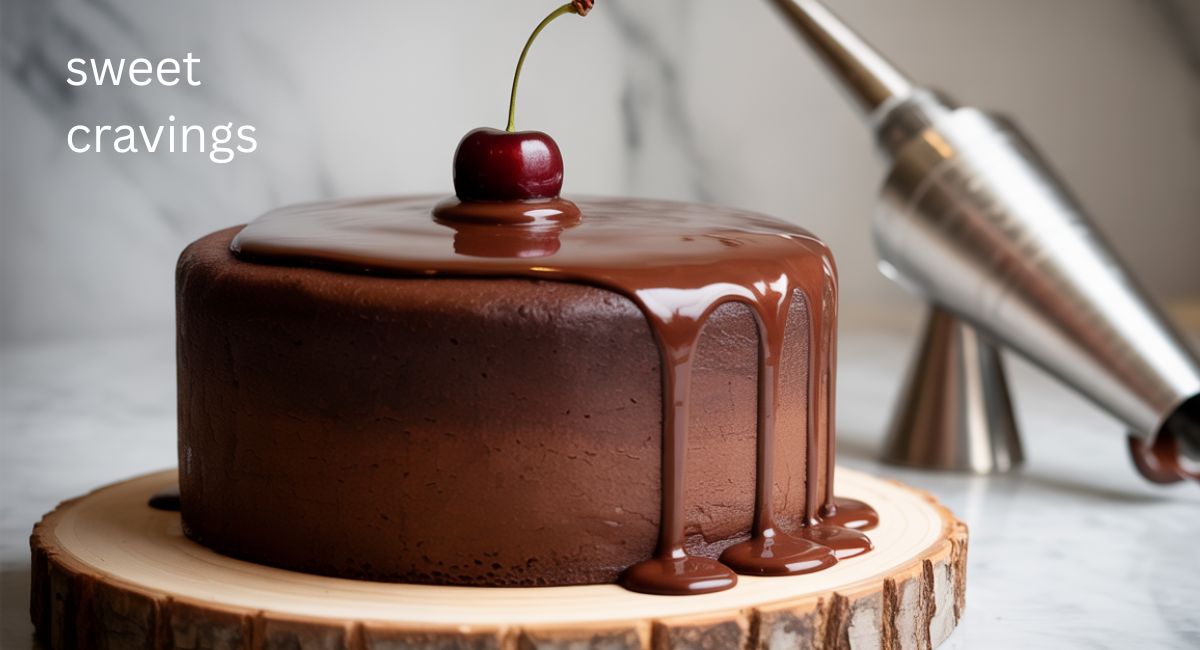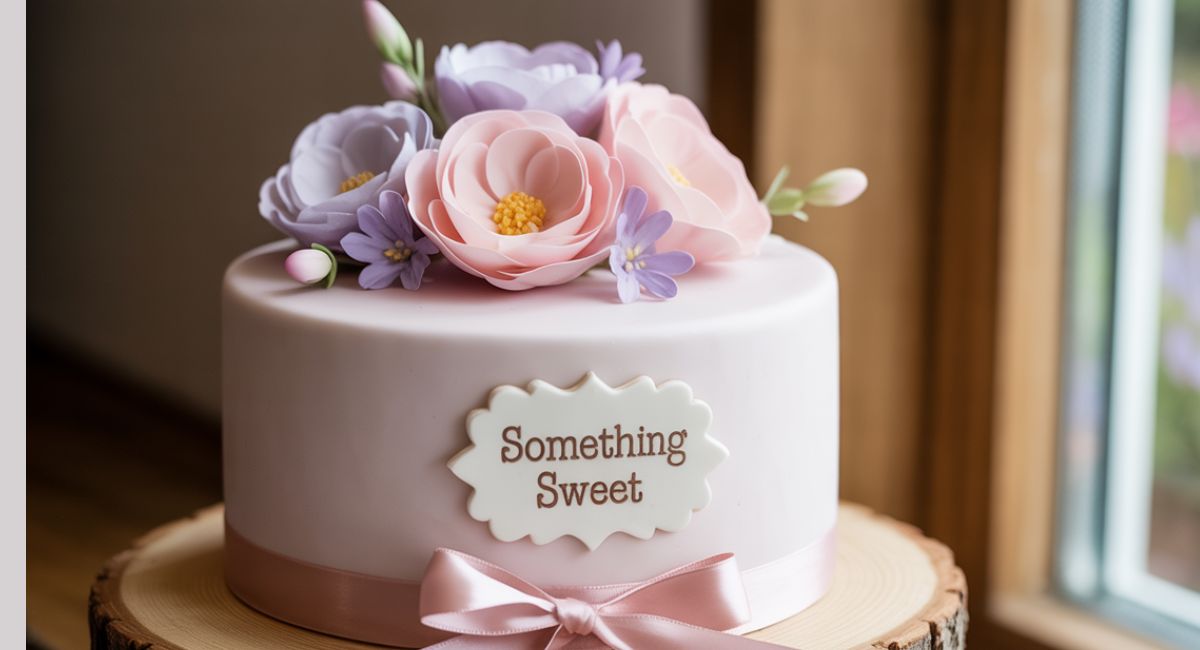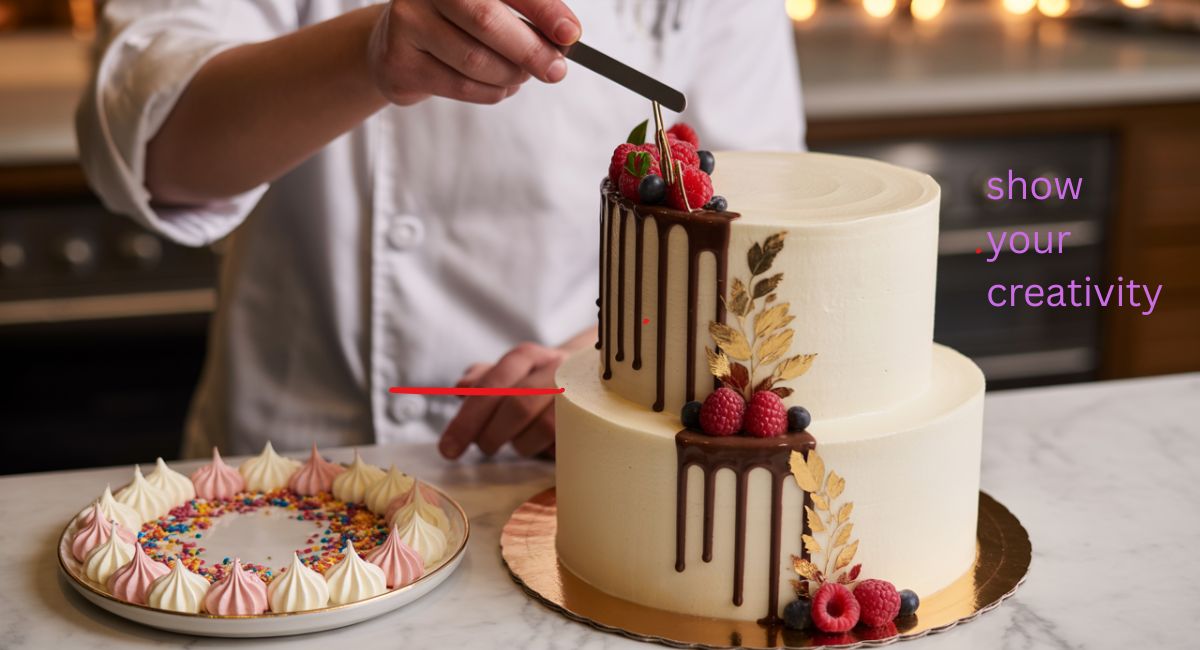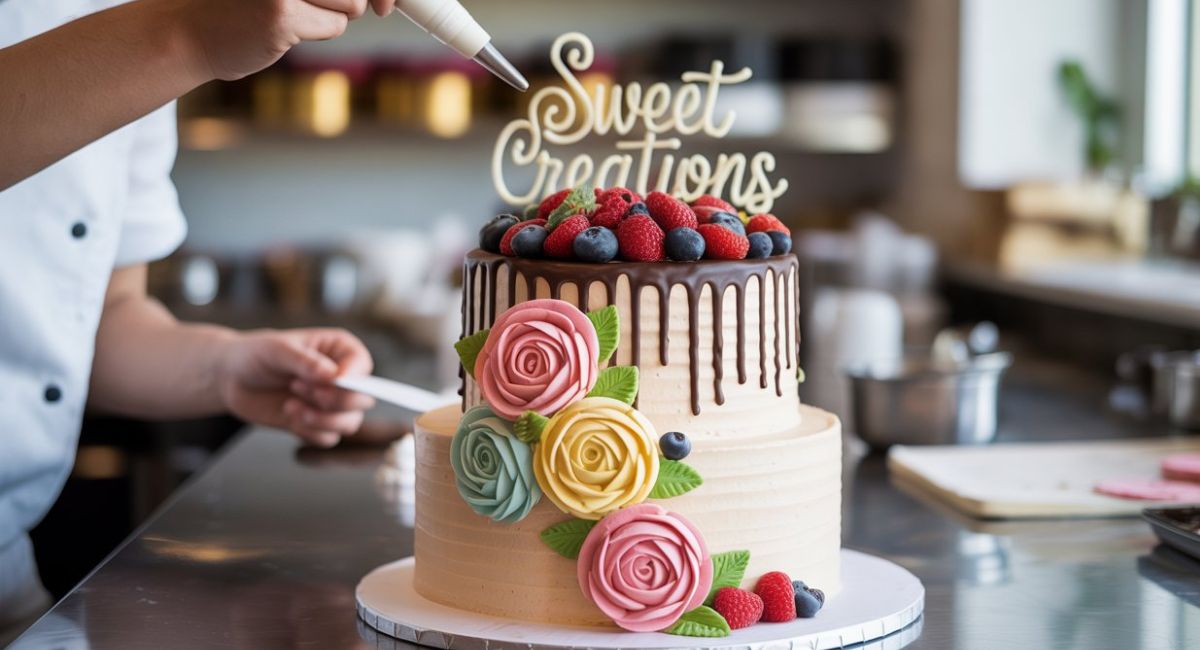Blog
10 easy Cake decorating ideas that elevate your baking skills and will wow your guests
Be happy! here come 10 easy cake decorating ideas that transform your homemade cake from simple and stunning. These ideas will help you to turn your ordinary treat into an extraordinary masterpiece. In this article, we have compiled not only those ideas that will impress your guests but also mention the techniques that will make you the star of your occasion. Let’s get ready to unleash your creativity and learn how to elevate your baking skills without any stress. Let’s dive into simple but impactful techniques that make you proud creativity. Moreover, Everyone is compelled to ask you: “From where did you learn this skill?”
Essential tools for cake decorating:
Before diving into the of cake decorating techniques that promise to wow your guests, it’s necessary to have a well-equipped toolkit. Just like any craft, the right tools can make a world of difference in your results. Start with a sturdy turntable; it allows for easy access to all sides of the cake and makes applying frosting evenly a breeze. moreover, an offset spatula is required for spreading and smoothing icing with accuracy.
Piping bags of various shapes and sizes are the next must-haves on your list, allowing for endless creativity in your designs. From creating elegant swirls to intricate flowers, the right piping tip can elevate your cake’s appearance significantly. Investing in reusable silicone piping bags can be more economical and eco-friendly in the long run.
Another versatile tool is the bench scraper. This handy tool helps achieve smooth, even sides on your cakes and can also be used to create textures or patterns in the frosting. Don’t forget to have a good set of cake pans in various sizes, as well as a cake leveler to ensure each layer is perfectly even. With these essentials, you’ll be well on your way to creating professional-looking cakes that will amaze your friends and family.
Simple buttercream techniques:

Buttercream is a fundamental element of cake decorating, because of its versatility and ease of use. One of the simplest yet most effective techniques is the crumb coat, which involves applying a thin layer of frosting to seal in crumbs. This step is essential before applying the final layer of buttercream, ensuring a smooth and clean finish. Using an offset spatula, spread a thin layer of buttercream over the entire cake, then refrigerate it for about 30 minutes to set.
On firm of crumb coat, spread the final layer of buttercream. A popular technique is the smooth finish, which is achieved by using a bench scraper or an offset spatula. For a flawless finish, dip the spatula in hot water, wipe it dry, and run it over the buttercream to smooth out any imperfections.
Buttercream also lends itself beautifully to texturing. Use the back of a spoon to create swirls or waves in the frosting. Another approach is the rustic look, where you intentionally leave spatula marks for a more natural, homemade appearance. These simple buttercream techniques can transform a plain cake into a visually appealing dessert that delights both the eyes and the taste buds.
Creative fondant decorations:

Fondant opens up a world of possibilities for cake decorators, offering a smooth, pliable surface that can be molded into a variety of shapes and designs. Start by rolling out the fondant to an even thickness, using a rolling pin on a surface dusted with powdered sugar to prevent sticking. be careful when you drape the fondant over the cake, then start smoothing it with a fondant smoother. This will help in eliminating air bubbles and wrinkles. finally, use a sharp knife to trim the excess fondant from the base.
One creative use of fondant is to make decorative elements like flowers, bows, and figurines. Using cookie cutters or fondant molds, you can easily cut out shapes that can be layered or combined to create intricate designs.
Fondant can also be painted to add color and detail to your cake. For this, use food coloring gels and mix with a bit of vodka or lemon extract to create a paint-like consistency that can be applied with a brush. This technique is perfect for adding delicate details, such as watercolor effects or hand-painted designs, that will make your cake a true work of art. With fondant, the only limit is your imagination, enabling you to craft cakes that are as beautiful as they are delicious.
use edible flowers for stunning effects:
Edible flowers are a fantastic way to add a touch of natural beauty to your cakes. They offer vibrant colors, unique textures, and a sense of freshness that can elevate any cake design. Before using edible flowers, it’s important to ensure they are safe for consumption.
One simple yet stunning way to use edible flowers is to place them directly on the cake. Arrange them in clusters around the edges or in a cascading pattern down the sides for a dramatic effect. You can also create a floral wreath by placing flowers in a circular pattern on the top of the cake. For a more cohesive look, consider matching the colors of the flowers to the overall color scheme of your cake.
Another technique is to candy the flowers, which adds a touch of sparkle and sweetness. To candy edible flowers, brush them lightly with egg white, then dust them with superfine sugar. Allow them to dry completely before arranging them on your cake. Candied flowers not only look beautiful but also add a delightful crunch. Edible flowers can transform a simple cake into a stunning centerpiece, making it perfect for weddings, birthdays, or any special occasion.
Tips and Techniques of piping:
Piping is an essential skill in cake decorating that allows you to create intricate designs and add personalized touches to your cakes. To get started, you’ll need piping bags and a variety of piping tips. Each tip creates a different pattern, from simple dots and lines to elaborate flowers and shells. Begin by practicing with basic tips like the round tip for dots and lines, the star tip for rosettes and shells, and the petal tip for creating delicate flowers.
One fun technique is the rosette, which is perfect for covering an entire cake or creating borders. Using a star tip, start piping from the center of the rosette and work your way outward in a spiral motion. Another popular piping technique is the basket weave, which gives the cake a woven texture that’s visually appealing. Use a basket weave tip to pipe horizontal and vertical lines in an alternating pattern. This technique is ideal for creating a rustic or country-inspired cake design. Additionally, you can use leaf tips to create realistic foliage and add depth to your floral arrangements. With practice and creativity, piping can make your cakes not only look professional but also uniquely beautiful.
Mastering the Art of Drip Cakes:
Drip cakes have become a trendy and eye-catching design in the world of cake decorating. The key to a successful drip cake lies in achieving the perfect consistency for the drip. Typically, ganache is used for the drips, which is made by combining chocolate and heavy cream. The ganache should be slightly warm and fluid, but not too runny. Test the consistency by dripping a small amount down the side of a bowl to ensure it creates a smooth, controlled drip.

To create the drip effect, start by pouring a small amount of ganache into the center of the chilled cake. Rotate the cake as you go to ensure even drips around the entire cake. For a more dramatic look, you can vary the length of the drips by adjusting the amount of ganache you pour over each section.
Drip cakes can be further embellished with additional decorations. Fresh fruit, edible flowers, macarons, and even candy can be arranged on top of the cake for an added wow factor. The combination of the sleek drips and the colorful toppings creates a visually stunning cake that is sure to impress. Whether you opt for a classic chocolate drip or experiment with colored ganache, mastering the art of drip cakes will elevate your cake decorating skills to a new level.
Unique Toppings to enhance your cakes:

Adding unique toppings to your cakes is an excellent way to enhance both their appearance and flavor. One simple yet effective topping is fresh fruit. Berries, citrus slices, and tropical fruits not only add vibrant color but also provide a refreshing contrast to the sweetness of the cake.
Another idea is to use edible glitter or luster dust to add a touch of sparkle to your cakes. These edible decorations come in a variety of colors and can be brushed onto fondant or buttercream to create a shimmering effect. Edible glitter is perfect for special occasions like weddings or birthdays, where a little extra sparkle can make the cake stand out.
For a more playful approach, consider using candy and chocolate as toppings. Crushed cookies, chocolate shards, and colorful candy pieces can be scattered on top of the cake or used to create fun patterns and designs. These unique toppings not only make your cakes look more exciting but also add layers of flavor and texture that will delight your guests.
seasonal cake decorating ideas:
Adapting your cake decorating to match the season can add a festive touch to your creations and make them even more special. For spring, think of pastel colors and floral designs. Use edible flowers, piped buttercream flowers, or fondant blossoms to create a garden-inspired cake. Fresh flavors like lemon, lavender, and strawberry can also be incorporated to enhance the seasonal theme.
Summer cakes can be bright and vibrant, reflecting the lively spirit of the season. Use bold colors and tropical decorations like pineapple, coconut, and mango. Consider creating a beach-themed cake with fondant seashells, edible sand made from crushed graham crackers, and blue buttercream waves. A drip cake with colorful ganache and fresh fruit toppings is also perfect for summer celebrations.
in the autumn season. think of decorations like fondant leaves, acorns, and pumpkins. Use spices like cinnamon, nutmeg, and cloves to infuse your cakes with the cozy flavors of fall. A naked cake with layers of spiced buttercream and topped with caramel drips and roasted nuts can be a showstopper for any autumn gathering.
Winter cakes can be elegant and festive, with decorations like snowflakes, holly, and pinecones. Use a palette of white, silver, and gold to create a winter wonderland effect. Consider incorporating flavors like peppermint, gingerbread, and dark chocolate. A classic yule log cake with intricate buttercream decorations and a dusting of powdered sugar can capture the essence of the holiday season. Seasonal cake decorating allows you to celebrate the unique beauty of each time of year and create cakes that are truly memorable.
Conclusion:
Cake decorating is a delightful blend of art and science that allows you to express your creativity while delighting others with your delicious creations. The techniques and ideas outlined in this article are just the beginning; the world of cake decorating is vast and full of opportunities for experimentation.
Remember that practice makes a man perfect. Set aside time to experiment with different techniques and tools, and don’t be discouraged if your first attempts aren’t perfect. With patience and persistence, you’ll see your decorating abilities grow. Join cake decorating communities online or take classes to learn from others and gain inspiration. Sharing your creations with friends and family can also provide valuable feedback and encouragement.
Ultimately, the most important aspect of cake decorating is to have fun and enjoy the process. Whether you’re creating a simple buttercream cake or an elaborate fondant masterpiece, the joy of bringing a cake to life is incomparable. So gather your tools, unleash your creativity, and start decorating! Your guests will be amazed by your stunning cakes, and you’ll have the satisfaction of knowing you created something truly special.

